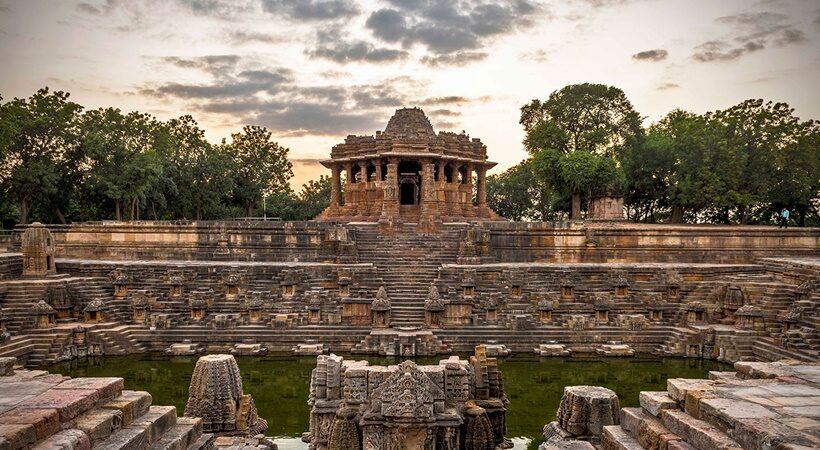A mesmerizing sight to behold, the Sun Temple at Modhera is a fine example of temple architecture in the Maru-Gurjara style. Some of the famous structures and temples of this style of architecture include the Ranakpur Jain Temple, the Rani Ki Vav of Patan, Dilwara Jain Temples, and Taranga Jain Temple, among others. The Sun Temple was constructed after 1026 CE, during the Chaulukya dynasty. Unlike other tourist destinations around the country, this temple isn’t usually overrun with tourists, which adds to its appeal. The Sun Temple Modhera is placed in a beautiful and well-landscaped garden. A Pathway fringed by lush green lawns on either side leads to the temple from the main gate. On the way, one can observe many figurines and carving slabs excavated from the site by the Archaeological Survey of India.
The temple complex has three components: Gudhamandapa, the shrine hall; Sabhamandapa, the assembly hall and Kunda, the reservoir. The halls have intricately carved exteriors and pillars. The figures of Surya are prominently carved on three niches of the shrine as well as on each side of three windows in the outer wall of Gudhamandapa. The figures of Surya are in a standing position with two arms holding lotuses and driven by seven horses. It has some Persian influences as well. The walls have 12 niches showing the different aspects of Surya each month. Every figure in the panel has a small cornice over it surmounted with a triangular pediment consisting of the chaitya-a window, which is called udgam.

The flight of steps through Kirti-Torana leads to the reservoir known as Ramakunda or Suryakunda. A Series of terraces and steps gradually lead from all sides to the water in the Kund. There are 108 small shrines placed with geometric precision at different points on all four sides of the Kund. These shrines are dedicated to various Gods and Goddesses of the Hindu pantheon.
The Tourism Corporation of Gujarat organises an annual three-day dance festival known as ‘Uttarardha Mahotsav’ at the temple during the third week of January, following the festival of Uttarayan. The objective is to present classical dance forms in an atmosphere similar to the one in which they were originally presented.



















